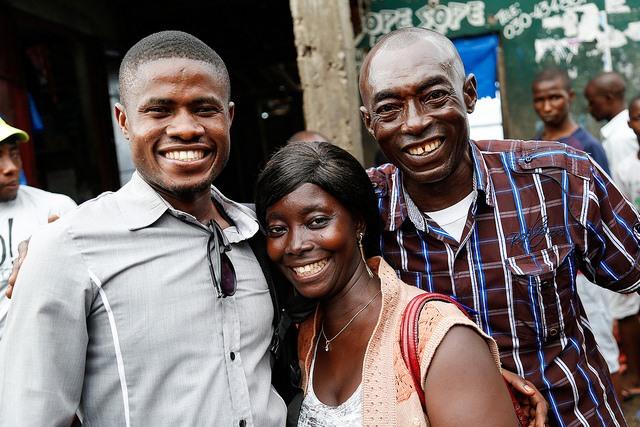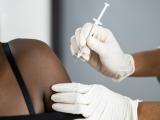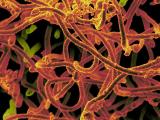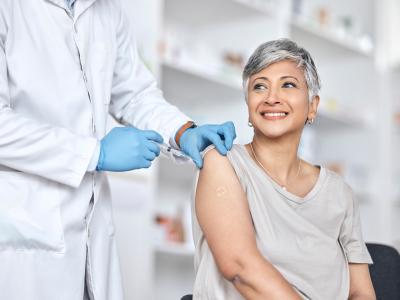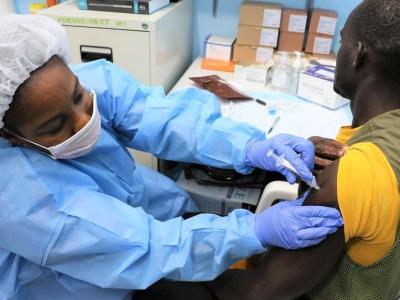Nearly 18 months after Sierra Leone reported its first Ebola case, the World Health Organization (WHO) on Nov 7 declared that the country has stopped transmission of the disease, with the passage of two incubation periods with no positive tests.
Sierra Leone is the second of three worst-affected outbreak countries to bring an end to virus transmission. On Sep 3 Liberia achieved Ebola-free status for the second time. Guinea, however, continues to report a trickle of new cases, most of them linked to a known transmission chain.
Of the three countries, Sierra Leone has the highest number of cases, though Liberia has the most deaths.
Case trajectory
In a Nov 7 statement, Anders Nordstrom, MD, the WHO representative in Sierra Leone, commended the country on reaching Ebola-free status. "The power of the people in Sierra Leone is the reason why we could put an end to this outbreak today," he said, crediting the country's government with mounting an effective response that included rapid response teams and strong community involvement to identify cases early.
The country recorded its first Ebola infection in May 2014 and experienced an exponential rise in cases in September and October 2014. Over the span of the epidemic, it reported 8,704 lab-confirmed infections and 3,589 deaths, which included 221 healthcare worker fatalities. Sierra Leone and its international partners slowed the outbreak by establishing treatment facilities and safe burial teams, the WHO said.
Sierra Leone now transitions to a 90-day enhanced surveillance period that will end Feb 5, according to the WHO, which said it will continue to support the country during its new phase of the outbreak. "We how have a unique opportunity to support Sierra Leone to build a strong and resilient public health system ready to detect and respond to the next outbreak of disease, or any other public health threat," Nordstrom said.
CDC modifies airport screening
In the wake of the WHO's announcement, the US Centers for Disease Control and Prevention (CDC) and the Department of Homeland Security today announced a change in entry screening for travelers from Sierra Leone. The move follows a Nov 2 step-down in the CDC's travel notifications, from warning level 3 to alert level 2.
The main change is that travelers from Sierra Leone will no longer need to be actively monitored by or be in contact with their health departments. Several of the enhanced screening steps remain in place, however, such as funneling of Sierra Leone passengers through one of five US airports that have been doing enhanced entry screening in the wake of the outbreak.
People traveling from Sierra Leone still must provide contact information so that health departments can contact them, if needed. Those with no enhanced risk factors will still receive a kit with information about the disease, a thermometer, and health department contact information.
The CDC said it will continue to monitor the need for screening Sierra Leone passengers to consider if other step-down measures are appropriate. The agency added that full screening and monitoring is still in effect for travelers entering the United States from Guinea, including those from Sierra Leone who traveled through Guinea.
MSF expert urges caution
Armand Sprecher, MD, a public health specialist for Doctors Without Borders (MSF) warned that as long as Ebola cases continue to be reported in Guinea, disease threats will remain in the region for the two countries that have ended transmission, Liberia, and now Sierra Leone.
He said the main issue in Guinea is the weak monitoring system, noting that health officials estimate that there are 233 people who came in contact with an Ebola patient who are not being followed. Sprecher also added that one of Guinea's recent cases was from an unknown transmission chain.
As the outbreak slowly winds down in the affected countries, several questions linger, such as whether Ebola will become endemic in the region and what risks remain among survivors, he said.
Regarding the endemic issue, Sprecher said so far factors weigh against the development. For Ebola to become endemic, a lot of new cases would need to surface, and so far response groups haven't seen ongoing pockets of disease fueled by sexual transmission. "Most of the male survivors of a sexually active age had the disease a year ago. So if sexual transmission happened to a significant extent, we would have seen many more cases," he said.
Another factor is that the virus would have to adapt well to its host, Sprecher said. He noted that viruses such as HIV and measles that jumped from animals to humans and became endemic often came from animals that are evolutionarily close to humans. "The Ebola virus, however, started with bats and is not well suited to human beings, and compared to other pathogens, it does not mutate quickly," he said.
Sprecher also said Ebola isn't conducive to becoming endemic, because it doesn't spread easily from casual contact, but rather from unsafe burials and caring for sick people.
As for risks posed by survivors, Sprecher said it's difficult to quantify, other than that there is a potential risk. He noted that in general, the immune-protected sites such as the testes, brain, and eyes aren't locations where the virus can easily spread to survivors, except for semen from the testes. "But these events are rare, and there are not enough of them to generate many new cases," he said.
He said focusing too much attention on risks posed by survivors could take resources away from other surveillance priorities. "Science should now be at the service of Ebola survivors and not the other way around."
See also:
Nov 7 WHO statement
Nov 7 WHO Anders Nordstrom statement
Nov 9 CDC statement
Nov 7 MSF report
